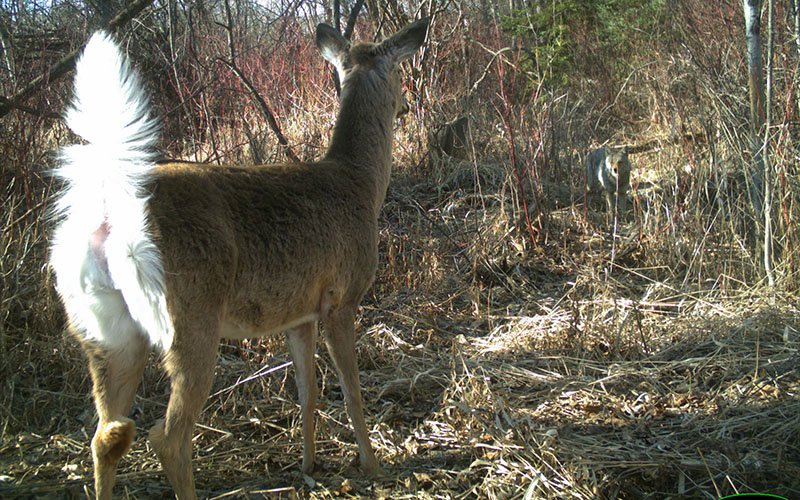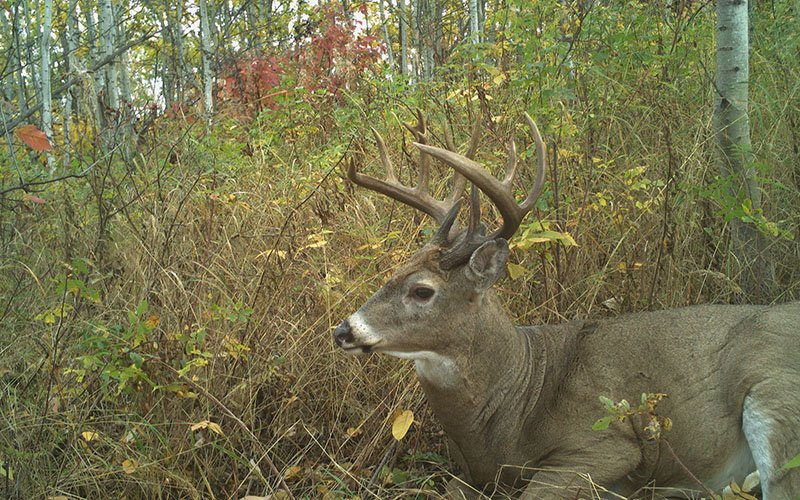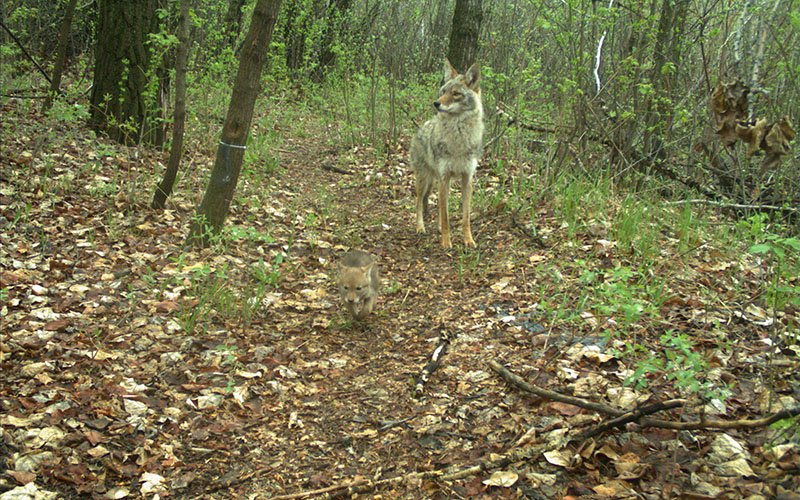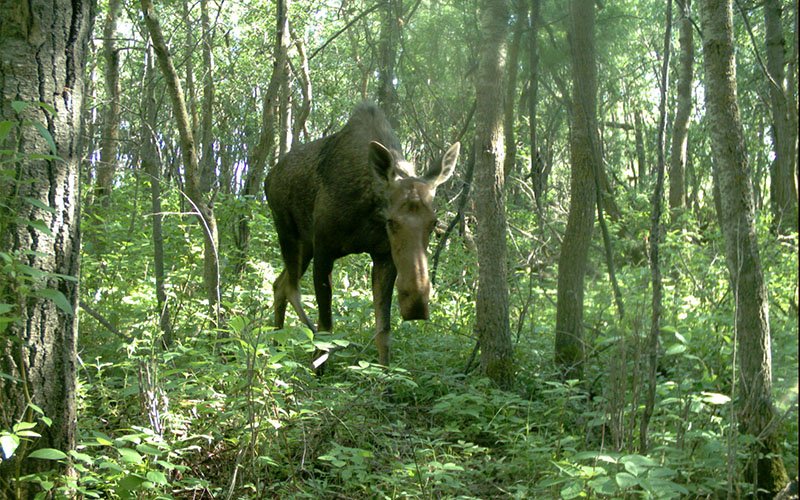Edmonton stewards a regionally significant wildlife corridor
River Valley Wildlife Corridor
by Markwell Lyon
The North Saskatchewan River valley parks system sports some impressive numbers: 7,400 hectares containing 160 kilometres of trails, 22 ravines, 20 major parks, 11 lakes, and one winding river. Yet the river valley is much more than an urban escape. With its natural diversity and connectivity, it provides a crucial wildlife corridor through one of Canada’s largest cities.




A deer and a coyote face off, a coyote and pup, a moose, a buck. Click to Enlarge!
Natural Connections
Wild animals must move to survive, yet modern cities like Edmonton pose significant physical barriers. With corridors, animals can get over, around, and through our infrastructure. Acting like hallways, corridors link natural areas like the rooms of a house, enabling animals to find new sources of shelter, food, and safer passage. In this way, corridors help species build resiliency in the face of human activity and climate change.
Corridors also promote biodiversity. By reconnecting smaller populations that would otherwise be isolated, they ensure the flow of genes and reduce the risk of inbreeding and local extinction. As the City of Edmonton’s 2008 Biodiversity Report explains, “maintaining and improving this connectivity will be critical to protecting biodiversity over the long term.”
Waterways like the NSR often anchor corridors. But keeping this corridor viable requires more than a river; a wide-enough buffer of riparian vegetation along the river’s banks is also needed. That means keeping development at a distance. Fortunately, the NSR valley park system—North America’s largest municipally owned urban park—does just that, connecting diverse natural areas into a “ribbon of green” that winds through the city.
The Need for Protection
That we have such an extensive corridor today is due to past generations of Edmontonians, whose efforts over decades helped to establish and protect the river valley park system. Yet threats persist. With less than half of it protected—just 43%, according to the Biodiversity Report—urban development continues to shadow the river valley, an important wildlife corridor and component of Edmonton’s ecological network.
“... the river valley is the most critical component for wildlife movement and ecological processes in Edmonton and the surrounding area and so has been identified as a regional biological corridor.”
— CITY OF EDMONTON’S BIODIVERSITY REPORT, 2008
Learn More (one Video is worth a 1000 words)
Wildlife camera data is being collected in the valley and it confirms we share the valley with many kin including Elk, Fishers, Cougars, Bears, Lynx. Wildlife Camera Project found here. And Here.
Edmonton and Area Land Trust (EALT) is protecting river valley land forever. Land trusts like EALT play a pivotal role in preserving land for generations to come. By putting easements (special rules) right onto a land title, EALT can conserve land and keep the city from changing its mind about land usage. Currently two properties within the valley have easements Larch Sanctuary (central) and New Jubilee Lands (NE). Read more about EALT and how they help protect our valley and our wildlife corridor.
BEAVER HILLS BIOSPHERE
An area ERVCC would love all readers to learn more about is the Beaver Hills Biosphere. Our valley offers important connections to this UNESCO-designated site. The biosphere hosts incredible initiatives, places, and people. Learn more here.
OTHER CONNECTIONS
Wildlife corridors are pathways of land, water, and air that facilitate movement for many species however, these corridors can become killing zones when pinched and transected by roads and other poorly planned urban development. This fragmentation undermines ecosystem integrity and prevents animal migration in response to climate stress. Existing corridors need to be protected, old ones restored, and new corridors established in order to protect species. ERVCC is here to help restore ecosystems, restore degraded land, and support local livelihoods. Great corridors are possible with Edmonton’s award winning wildlife passages and by restoring our ribbon of green.
